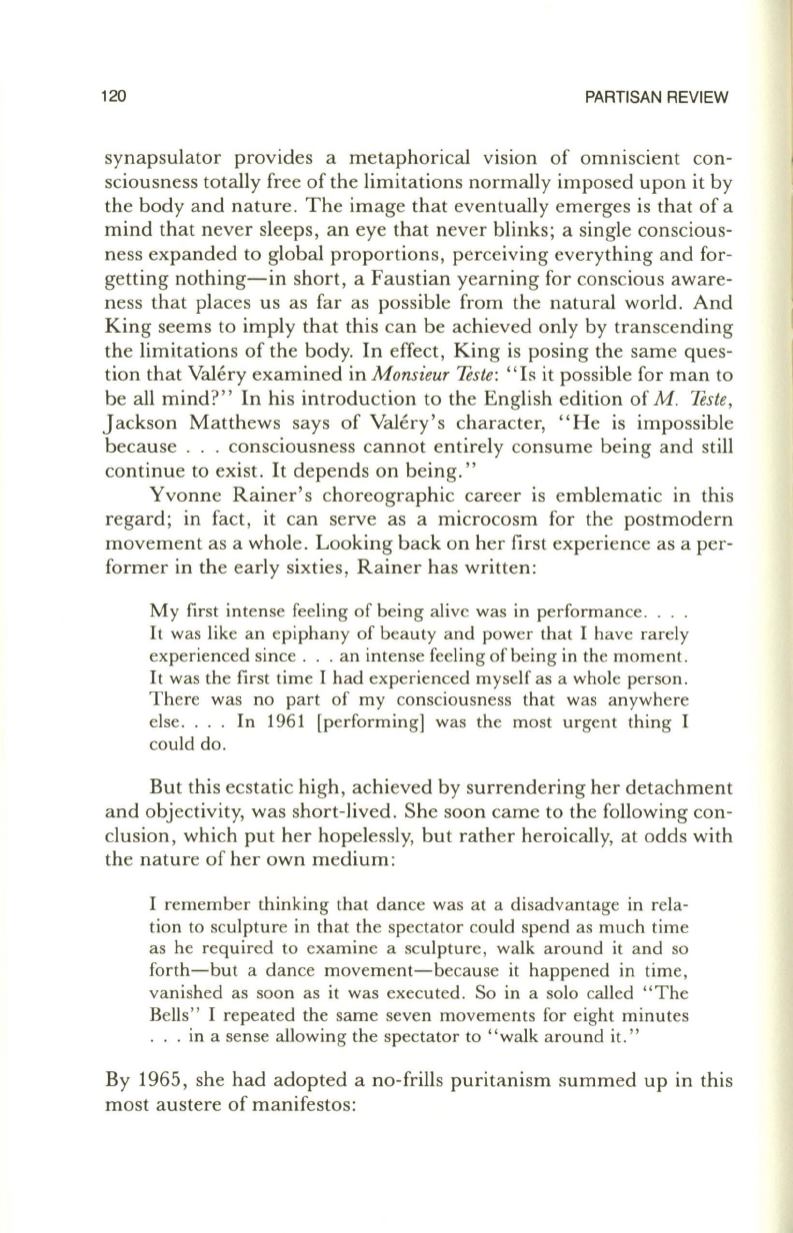
120
PARTISAN REVIEW
synapsulator provides a metaphorical ViSiOn of omniscient con–
sciousness totally free of the limitations normally imposed upon it by
the body and nature. The image that eventually emerges is that of a
mind that never sleeps, an eye that never blinks; a single conscious–
ness expanded to global proportions, perceiving everything and for–
getting nothing-in short, a Faustian yearning for conscious aware–
ness that places us as far as possible from the natural world. And
King seems to imply that this can be achieved only by transcending
the limitations of the body. In effect, King is posing the same ques–
tion that Valery examined in
Monsieur Teste:
"Is
it possible for man to
be all mind?" In his introduction to the English edition of
M. Teste,
Jackson Matthews says of Valery's character, "He is impossible
because ... consciousness cannot entirely consume being and still
continue to exist. It depends on being."
Yvonne Rainer's choreographic career is emblematic in this
regard; in fact, it can serve as a microcosm for the postmodern
movement as a whole. Looking back on her first experience as a per–
former in the early sixties, Rainer has written:
My first intense feeling of being alive was in performance.
It was like an epiphany of beauty and power that I have rarely
experienced since . .. an intense feeling of being in the moment.
It was the first time I had experienced myself as a whole person.
There was no part of my consciousness that was anywhere
else.... In 1961 [performing] was the most urgent thing I
could do.
But this ecstatic high, achieved by surrendering her detachment
and objectivity, was short-lived. She soon came to the following con–
clusion, which put her hopelessly, but rather heroically, at odds with
the nature of her own medium:
I remember thinking that dance was at a disadvantage in rela–
tion to sculpture in that the spectator could spend as much time
as he required to examine a sculpture, walk around it and so
forth-but a dance movement-because it happened in time,
vanished as soon as it was executed. So in a solo called "The
Bells" I repeated the same seven movements for eight minutes
... in a sense allowing the spectator to "walk around it."
By
1965,
she had adopted a no-frills puritanism summed up in this
most austere of manifestos:


